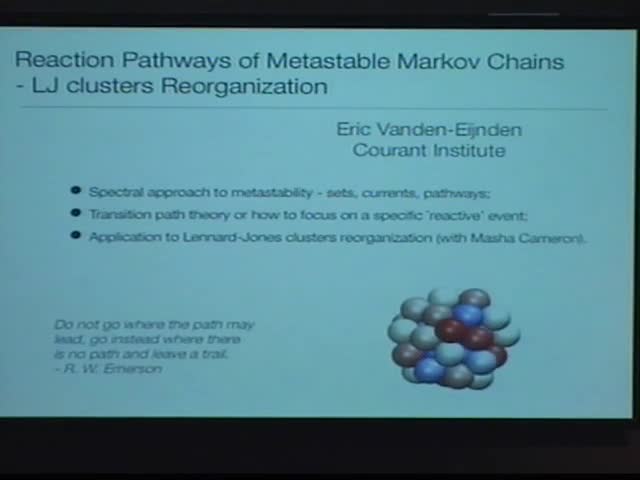Reaction pathways of metastable Markov chains with application to Lennard-Jones clusters reorganization.
Presenter
October 23, 2012
Keywords:
- Applications of Markov chains
MSC:
- 60J20
Abstract
Lennard-Jones particles tend to aggregate in tetrahedra that can then form larger clusters with icosahedral symmetry. For clusters with certain number of particles (e.g. 38), the icosahedral structure is not the one with lowest energy, which is an FCC-based structure with octahedral symmetry. We may ask: How does the system reorganize itself after self-assembly to reach this ground state of its energy and how long does this process take? The dynamics of this reorganization can be modeled by Markov chain, i.e. a random walk on a network whose nodes are the local energy minima of the cluster and whose edges are the minimum energy paths connecting these minima with weights that depend on the energy barrier to be crossed to hop from one local minima to one of its neighbor on the network. It is natural to think about using large deviation theory (LDT) to understand the pathways of reorganization on such a network. Here, however, we show that the predictions of LDT are only valid at very low temperature when the time-scale of reorganization is extremely large. At more moderate temperatures, the system remains highly metastable (in the sense that there exists low lying eigenvalues in the spectrum of the chain) but reorganization occurs by a pathway that is different than that predicted by LDT and can be quantified precisely using different tools that will be presented in the talk. These tools are applicable to other Markov chains displaying metastability over two or more states and show that LDT results must be applied with care when the dimensionality of the system is large and entropic effects are important.
